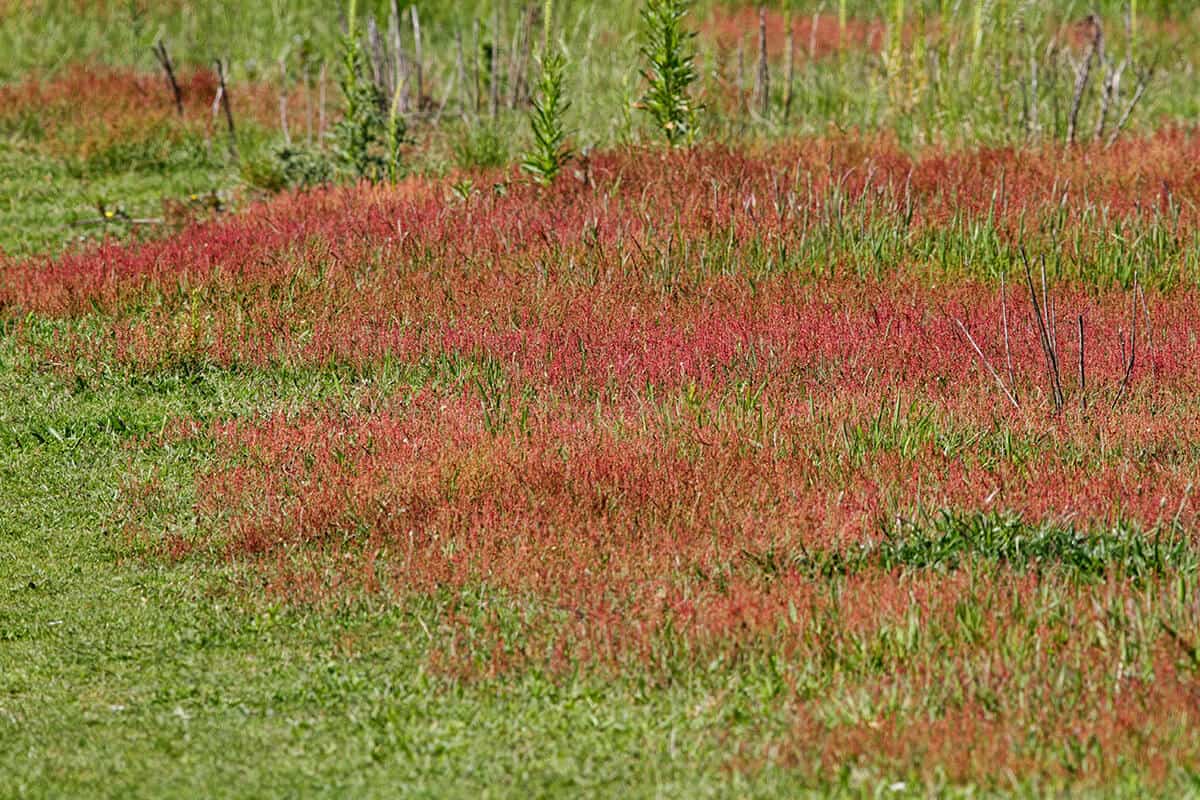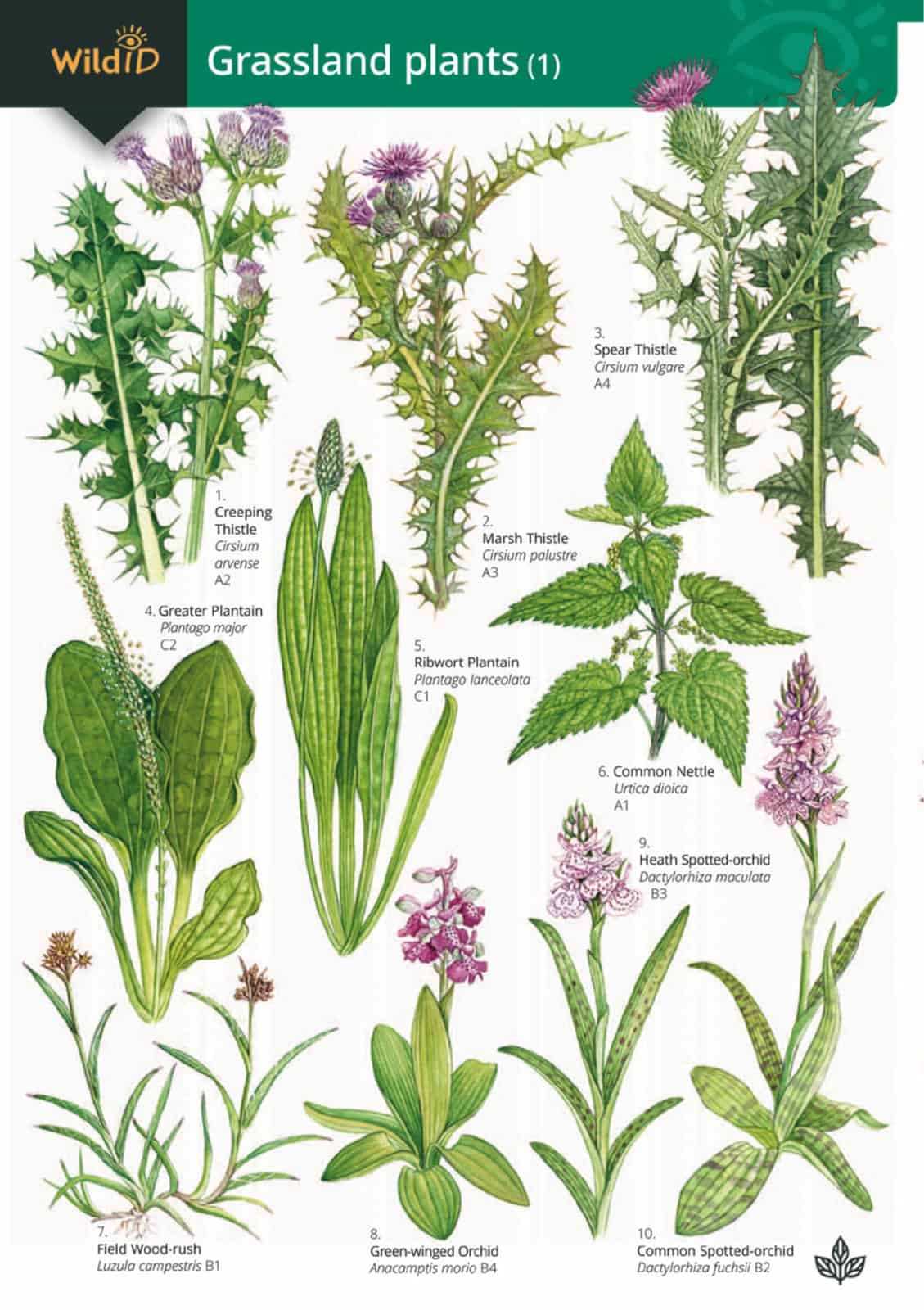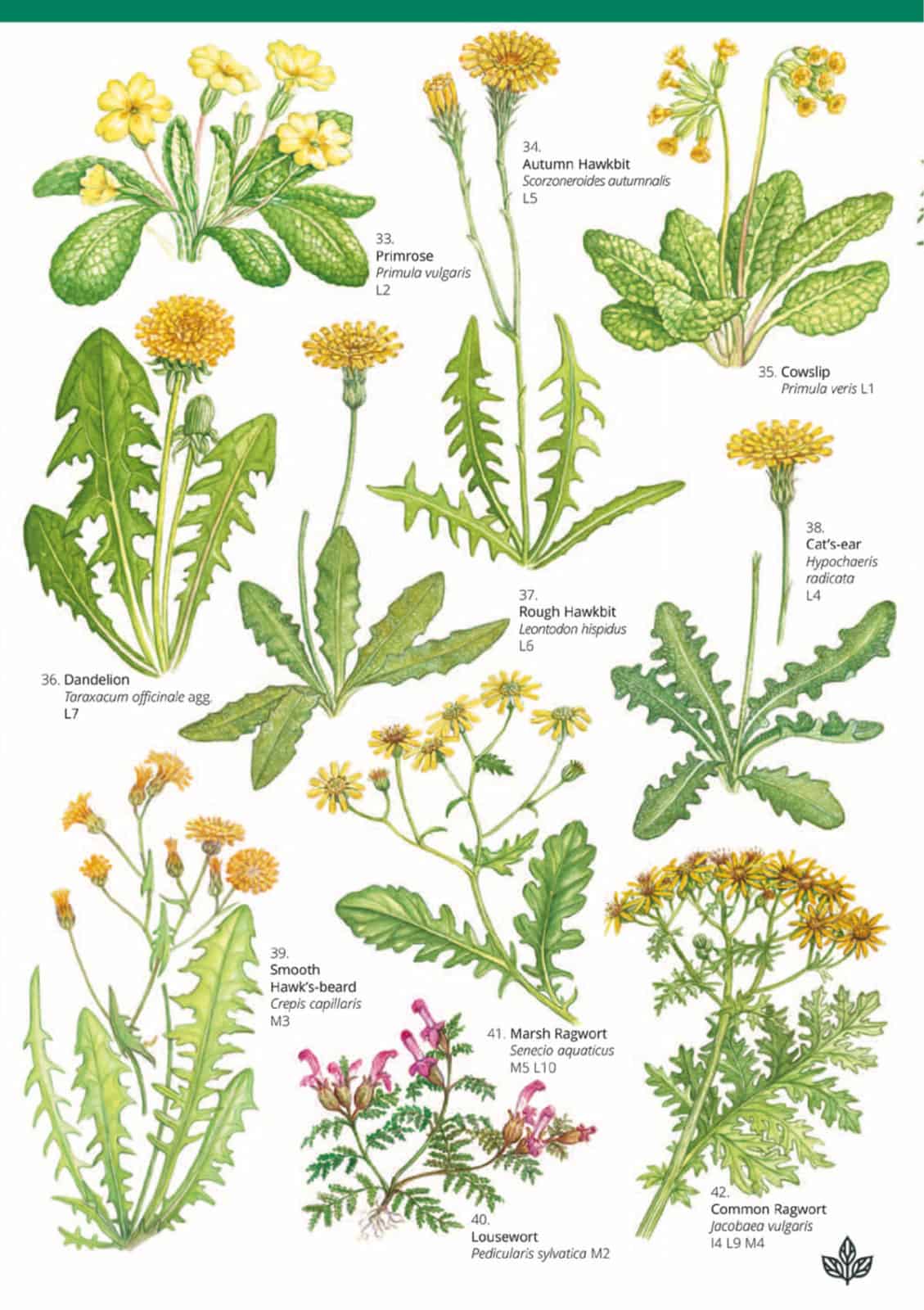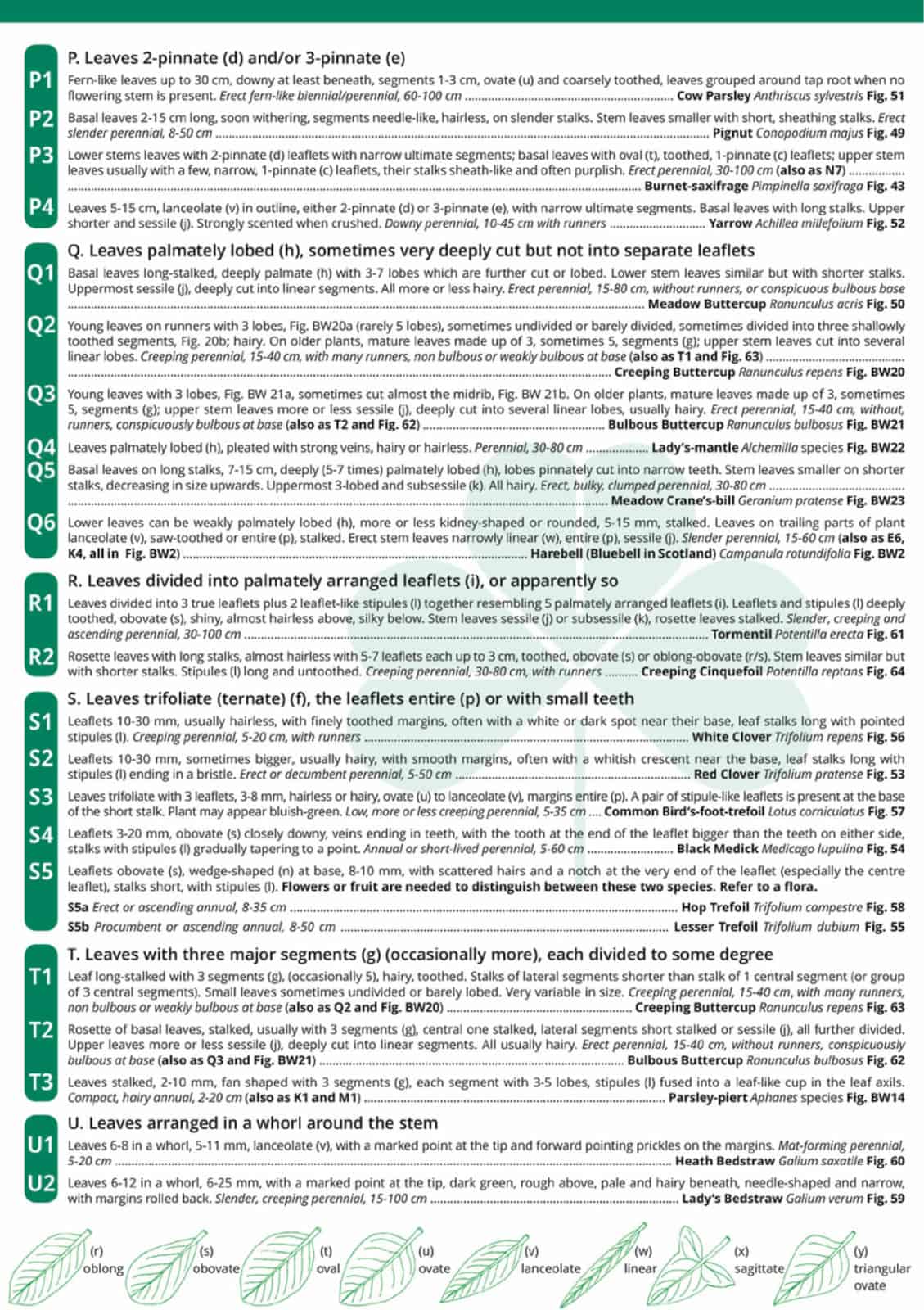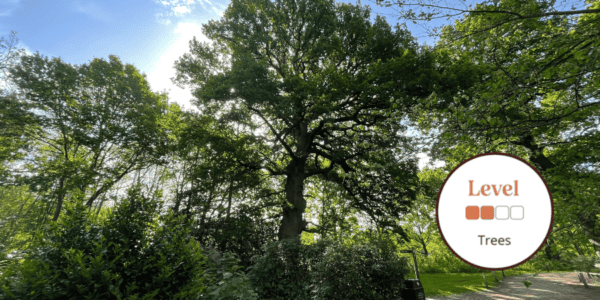Grassland plants 1 guide
FSC Grassland plants 1 guide features 64 flowering plants of lowland acid and neutral grasslands.
Beautiful colour illustrations show the key identification features of each plant, including flowers, leaves and stems. The authors have grouped the plants by flower colour. Use this concise fold-out guide to quickly put a name to the flowers that you see.
But what if you find a plant that is not in flower? Based on the authors’ many years of teaching botanical students, traditional wild flower guides are not much help here. So we’ve included a vegetative key to plants of acid and neutral grassland. This is a full identification key based on leaf characteristics. In particular, there is special guidance on identifying rosettes. A number of plants produce rosettes early in their growth cycle, and many respond to heavy grazing or trampling by adopting a rosette form.
Acid and neutral grassland is widespread across Britain and Ireland. Most common plants of grassland, except those occurring on chalk or limestone, feature in this guide. Acid grassland is found on soils with a low pH (under 5.5). By contrast neutral grassland is found on soils with a pH around 5.5-7.0. Many of these plants are most abundant where there has been little or no agricultural improvement such as drainage, ploughing or re-seeding. But you should find at least some of these species is most grasslands, including pasture, meadow, road verges and lawns.

